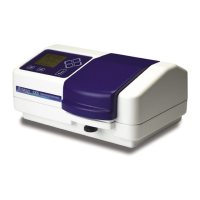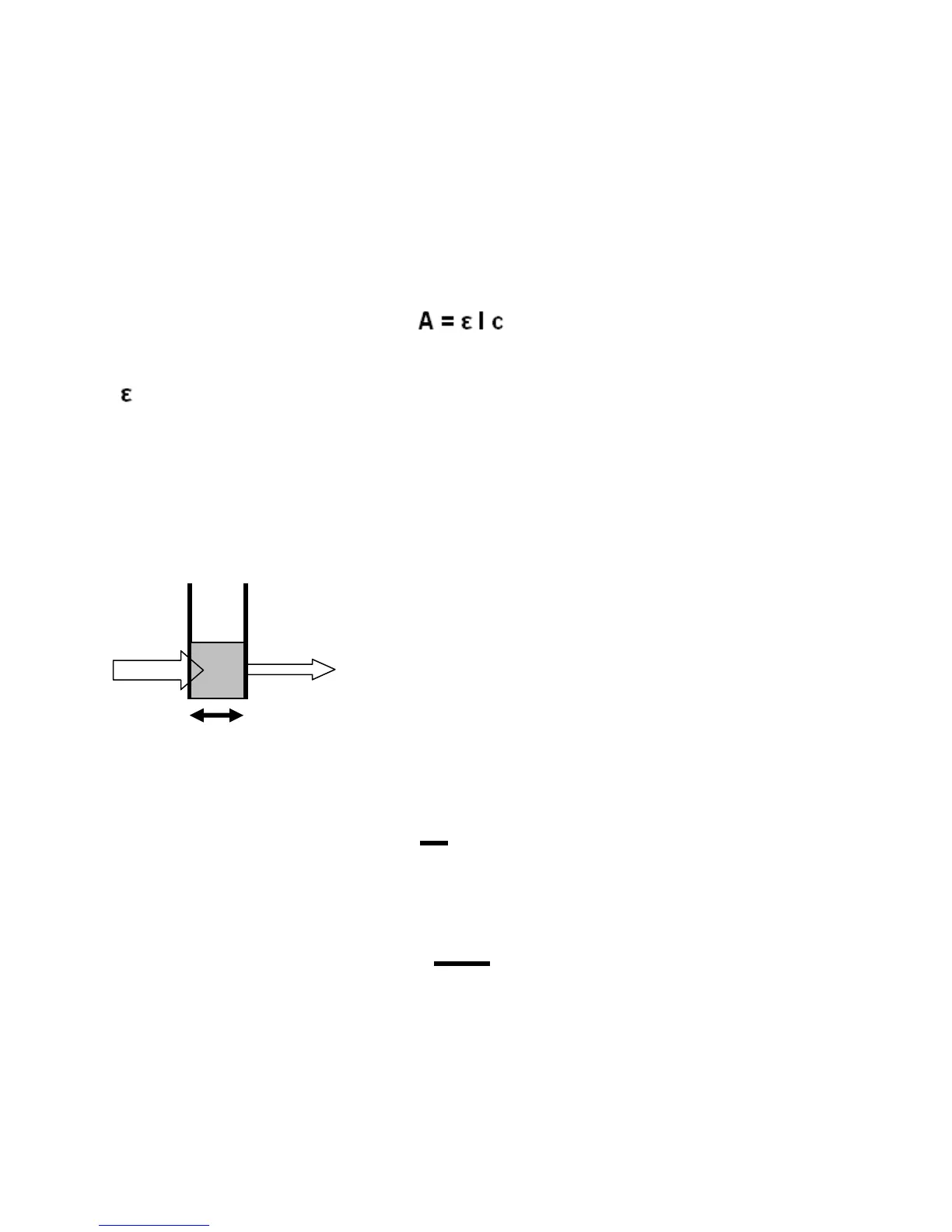SECTION 3 – Theory and Practice of Spectroscopy Measurements
3.1 THEORY OF SPECTROSCOPY MEASUREMENT
UV-visible spectroscopy is the measurement of the absorbance of light at a specific wavelength in a
sample. This is used to identify the presence and concentration of molecular entities within the
sample. The Beer-Lambert law is used to relate the absorption of light to the properties of the sample
through which the light is travelling through. The Beer-Lambert law states that:
A is the absorbance
is the molar absorption coefficient (l mol
-1
cm
-1
)
c is the concentration (mol l
-1
)
l is the path length (cm)
This law shows that absorbance is linear to concentration but this is only true for low concentrations.
For absorbance levels above 3 the concentration starts to move away from the linear relationship.
Transmittance is the proportion of the light which passes through the sample:
Therefore:
T = I
t
I
o
Absorbance is inversely related to transmittance:
A = log 1
T
Where:
l
o
is the incident light
l
t
is the transmitted light
l is the path length

